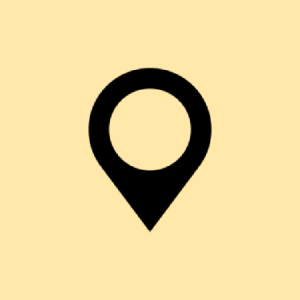Even though walking around on rocks along the coast may feel annoying, it’s often a good indicator of the presence of optimal bottom conditions for the sea trout and its food options. Everything from pebble to huge chunks of granite provides cover for sand hoppers, shrimp, and small fish. If there are waves, these food options are easily whirled up into the water column. A rocky bottom can be good all year round, but especially so during the cold months with few food options in the deeper water. A rocky bottom at a good depth also attracts other predatory fish such as cod and garfish.
A rip channel is a deeper area between coast and bar, or an underwater groove of a significant depth. A rip channel usually has a dark bottom shaped by rocks and bladder wrack, but it can also consist of pure sand or gravel. You can’t avoid finding these rip channels on the coast, since they are some of the most common bottom conditions in Danish waters. The size of a rip channel varies greatly. Even the smallest rip channels, only a few meters wide, can contain many fish. The sea trout swims around these rip channels to hunt for food. In line with the tide, the fish cross the bars to reach the rip channel that’s closest to land, since that often contains the most food options.
Along with the eelgrass, bladder wrack is the most prevalent aquatic plant along the Danish shores. This seaweed attaches itself to smooth surfaces such as rocks, gravel, and other variations on the bottom. The bladder wrack is a good hiding place for food options and fish. Bottom conditions with bladder wrack are good indicators of fish being nearby.
Formations of rocks, gravel, or sand created by current, wind, and weather form a compressed and lifted seabed, which provides fish with optimal conditions. There is often a huge water flow on these reefs. The depth is often greater on the sides of a reef, which means that the current will often be stronger there. Shoals of smaller fish roam in proximity to reefs in order to hunt, since the small food options are whirled around in the current. In their wake, the sea trout and other predatory fish follow. Reefs are useful spots year round, and they are optimal stops for sea trout when they migrate. Spending more time than usual on such a spot can easily be worth it.
 Fishing spots
Fishing guide
Associations and water care
Information and rules
Explore Denmark
Fishing spots
Fishing guide
Associations and water care
Information and rules
Explore Denmark
















